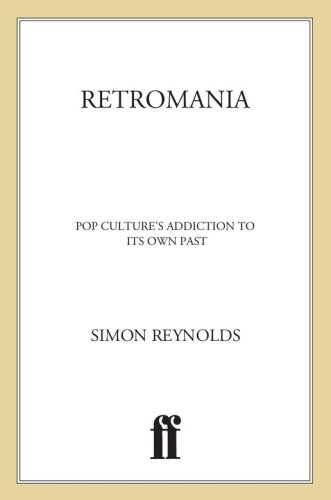
Retromania
Pop Culture's Addiction to Its Own Past
کتاب های مرتبط
- اطلاعات
- نقد و بررسی
- دیدگاه کاربران
نقد و بررسی

May 30, 2011
Kids today are too besotted with every old thingâand a stagnant culture is the result, argues this lively though muddled manifesto. Rock critic Reynolds (Rip It Up and Start Again) visits retro impulses in fashion, architecture, movies, and painting, but focuses on what he claims are the formaldehyde-soaked horrors of retro rock music: tours by geriatric boomer bands; wistful VH1 retrospectives; the musty curatorial obsessions of rock museums and hipster connoisseurs; new bands whose music merely cuts-and-pastes hoary influences; the all-preserving Internet, where adolescents graze in every musical era without developing their own generation-specific sound. There's self-contradiction here, and shallow jadednessâmusically, "2010 didn't feel that different from 2009, or even 2004"âand a strange pique at teens who distinguish aesthetics from novelty ("The attachment on the part of young people to genres that have been around for decades mystifies me"). The author's brief for a self-consciously modernist pop music of "constant change and endless innovation" itself betrays a retro hankering for 1960s-style rock revolutionism. But Reynolds's mix of canny erudition, critical theory, stylish prose, and vibrant evocations of bands both famous and unheard-of, nails the appeal of retro almost despite himself; as he deplores musical nostalgia, he reminds us why it mesmerizes us.

July 1, 2011
A leading British music critic argues that our fascination with the recent past has stifled innovation and originality in popular culture.
Noting that "there has never been a society in human history so obsessed with the cultural artifacts of its own immediate past," Reynolds (Bring the Noise: 20 Years of Writing About Hip Rock and Hip Hop, 2011, etc.) offers cogent examples of the "lame and shameful" retromania in pop music, including revivals, reissues, reunions, tribute albums, golden oldie shows, boxed sets and music documentaries. Part of a broader societal obsession with nostalgia—e.g., remakes of blockbuster movies, iconic TV shows and vintage fashions—this constant use and abuse of the past prevents the making of groundbreaking music. New styles like hip hop and rave culture can no longer emerge; instead, pop musicians of the 2000s tweak established musical genres and raid archives. Much of Reynolds's absorbing, brightly written and rambling book focuses on the evolution of pop nostalgia, beginning with the emergence of Sha Na Na, the '50s revival group, in 1969, and the subsequent rise of a rock-nostalgia industry that reunited Dion and the Belmonts, the Five Satins and other groups. By the '80s, rock's history was being archived at venues like the Rock and Roll Hall of Fame, where the ashes of noted rock disk jockey Alan Freed, the clothing John Lennon wore when he was shot and other memorabilia were displayed like "medieval sacred relics." Disappointed by visits to such museums and to performances by reformed groups like the New York Dolls, Reynolds fears that our obsession with the recent past has become a structural part of rock music. Retromania is made possible by our increasing ability to access and share cultural data through new technologies.
Important—and alarming—reading for pop-music aficionados.
(COPYRIGHT (2011) KIRKUS REVIEWS/NIELSEN BUSINESS MEDIA, INC. ALL RIGHTS RESERVED.)

Starred review from June 1, 2011
In this unusual history, music critic Reynolds argues that the last decade was obsessed with what he calls retro-rock, a fascination with the sounds of living memory. This ongoing obsession has resulted in reissues, box sets, remakes, reenactments of famous past concerts, reuniting of bands, and, generally, an endless retrospection that he deems not only unhealthy but also an abuse of the pop-music past. Rock history has become, he suggests, a gigantic, always accessible archive. He discusses the wrinkling of rock but also the new old music: music created by young musicians that draws heavily on the past. There has never been a society, he concludes, that has been so obsessed with the cultural artifacts of its own immediate past. What happens, he wonders, when we run out of past? He goes so far as to claim that the new century may be remembered more for its technology than for the music itself. Indeed, he calls the invention of the iPod the biggest thing to happen to music during the first decade of the twenty-first century. A provocative and original inquiry into the past and future of popular music.(Reprinted with permission of Booklist, copyright 2011, American Library Association.)

























دیدگاه کاربران